Find Used Mitsubishi Engines For Sale
Save Time
Stop wasting phone calls! Make one enquiry & contact a large network of junk yards.
Compare Prices
Salvage yards contact you with their prices and availability.
Buy Engines Direct
No middle man costs! Buy directly from Mitsubishi junk yards.
Find A Second Hand Engine For Any Mitsubishi Fast!
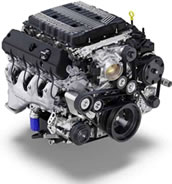
It can be hard to find a good engine, and even harder to find a good deal on one.
Not only is it difficult to find a good engine, but the process of finding one can be long and arduous. You have to contact multiple suppliers, compare quotes, and make sure you’re getting the best price.
Used Engine Finder makes it easy for you. We are a network of engine importers and vehicle junkyards throughout USA. Our engine suppliers offer shipment throughout USA and offer the best prices on engines for sale sourced from wrecked vehicles or imported from overseas.
Network Of Mitsubishi Auto Wreckers & Engine Importers
Past Mitsubishi Engine Inquiries
Date | Vehicle Model | Year | Customer City | Comments |
|---|---|---|---|---|
2024-02-27 13:43:03 +00:00 | Eclipse | 2000 | Harpursville | Need engine |
2024-02-23 15:21:20 +00:00 | Eclipse | 2000 | orlando | whole engine swap |
2023-03-19 01:41:30 +00:00 | 3000gt | 95 | Kalamazoo | 95 Mitsubishi GT3000 3.0 litre engine without turbo |
2022-06-22 06:22:08 +00:00 | Fortwo | 2008 | Austin | 3B21 3 cylinder Mitsubishi |
2022-04-21 00:45:03 +00:00 | 3000gt | 1994 | Portland | 3.0 dohc twin turbo 4bolt main . 1994 or newer |
2022-04-14 12:24:59 +00:00 | Eclipse | 2007 | Punxsutawney | I need a 2.4 engine out of an 06 to 08 Mitsubishi eclipse. Thank you. |
2022-03-26 15:57:13 +00:00 | Van | 1989 | Jamaica | 1989 mitsubishi van engine 2.4L |
2022-03-26 15:57:08 +00:00 | Van | 1989 | Jamaica | 1989 mitsubishi van engine 2.4L |
2022-03-26 15:57:03 +00:00 | Van | 1989 | Jamaica | 1989 mitsubishi van engine 2.4L |
2022-02-21 06:16:35 +00:00 | Eclipse | 2001 | Bakersfield | 3.0 v6 Mitsubishi eclipse spyder gt MT need hole motor and transmission |
2022-02-02 07:57:26 +00:00 | Eclipse Spyder GT | 2008 | Glendale | Complete Engine and Automatic Transmission for me to Rebuild. |
2021-11-22 23:12:32 +00:00 | 3000gt | 1995 | Kingman | Looking for an engine for a 1994-99 Mitsubishi 3000GT vr4 or GTO Vr4 that mates to the Getrag 6 speed transmission. |
2021-05-27 19:03:22 +00:00 | lancer | 2010 | Belmont | engine |
2021-03-17 22:43:08 +00:00 | Eclipse | 2000 | Colorado Springs | Engine Assembly |
2021-03-13 16:00:28 +00:00 | Lalcer | 2012 | Germantown | Motor |
2021-03-10 18:26:43 +00:00 | Lancer | 2012 | Gaithersburg | Engine |
2021-03-10 03:58:52 +00:00 | Outlander | 2014 | Estes Park | Used engine/ Rebuilt engine |
2021-02-23 17:20:48 +00:00 | Eclipse gt spyder | 2007 | Lewisburg | Need a whole engine |
2021-01-31 11:08:04 +00:00 | Montero | 2002 | Cincinnati | Engine |
2020-08-14 22:51:10 +00:00 | Eclipse | 2008 | Phoenix | Looking for a 2.4 used Mitsubishi engine |
About Mitsubishi
About Mitsubishi
Mitsubishi Motors Corporation – a Japanese automotive manufacturer based in the Minato District of Tokyo, founded in 1917.
In 2011, Mitsubishi Motors was the sixth largest Japanese car manufacturer and the sixteenth largest producer in the world. The company is present on over 160 markets, with special representation in the ASEAN Association of Southeast Asian Nations .
MMC currently employs 30,000 employees worldwide and manufactures cars at production facilities in Japan, Thailand, China, Indonesia, the Philippines and Russia. In the fiscal year 2016, the company sold 926,000 vehicles in over 160 countries, achieving net sales of 1.9 trillion yen.
MMC is part of a group of related companies Mitsubishi keiretsu, which for years is the largest industrial group in Japan. The logo with three red diamonds, under which more than forty other enterprises belonging to the group of related companies ( keiretsu ) operated , appeared almost a hundred years before the creation of Mitsubishi Motors. Iwasaki Yatarō, the founder of Mitsubishi, chose them personally , because he associated him with the emblem of the Tosa clan, who first gave him employment, and because the crest of his own family formed three diamonds stacked on top of each other. The name ‘Mitsubishi’ (Japanese) consists of two parts: ‘mitsu’, which means ‘three’ and ‘hishi’ (which due to the rendaku, or the sound of the first consonant, evolving into “bishi”), meaning “anchor” (also called ” water nut “) and hereinafter “rhombus”, which is found in the Mitsubishi logo. MMC was founded in 1970 as a result of the transformation of the automotive division of Mitsubishi Heavy Industries.
Nissan has owned a third (34%) of Mitsubishi Motors since October 2016, and the Mitsubishi car brand is now part of the Renault-Nissan-Mitsubishi alliance. The main shareholders of MMC are Nissan Motor Co., Mitsubishi Corporation, Mitsubishi Heavy Industries and The Bank of Tokyo-Mitsubishi UFJ. MMC is listed on the Tokyo Stock Exchange.
Previously, Mitsubishi Forso was also part of Mitsubishi Fuso Truck and Bus Corporation , which now operates as a separate economic entity, deals in the construction of utility trucks, buses and heavy construction equipment and is owned by Daimler AG (with a small share of Mitsubishi).
Relations with Chrysler
The 1970s
Mitsubishi Galant from 1973, the effect of the company’s first import agreement with Chrysler
One of the elements of the development strategy adopted by Tomio Kubo was to increase exports by establishing cooperation with recognized and prosperous foreign companies. Therefore, in 1971, the MHI group sold 15% of its shares in the new company to the American giant. Thanks to this move, Chrysler began selling the Galant in the United States, offering it as the Dodge Colt (i.e. the first Mitsubishi product offered by Chrysler under a changed name) and pushing the annual MMC production volume above 250,000. vehicles. In 1977, Galant was also available on the Australian market as Chrysler Sigma. By 1977, a sales and distribution network for the “Colt” brand was also created in Europe, where Mitsubishi planned to launch direct sales of vehicles. Until then, annual production has already increased from 500,000. pieces in 1973 to 965 thousand in 1978, when Chrysler launched sales of the Galant (as Dodge Challenger ) and Plymouth Sapporo models. However, such dynamic expansion became a source of confusion over time, because Chrysler began to perceive the foreign operations of its Japanese partner as a direct competition for its activities in the subcompact model segment in external markets, and MMC felt that Americans were trying too much to interfere in the actions taken by not corporate decisions.
The 1980s
In 1980, Mitsubishi production finally reached the annual ceiling of one million passenger cars, but its American partner did not fare so well. In the same year, to avoid bankruptcy , Chrysler was forced to sell MMC its shares in the Australian production department. The new Japanese owner renamed the company to Mitsubishi Motors Australia Ltd (MMAL).
In 1982, the Mitsubishi brand debuted on the US market for the first time. In the first period, the Tredia sedan and two coupé models , Cordia and Starion, were sold in a network of seventy dealerships in 22 states. According to the agreement ( VER ) between the governments of the two countries, a total of up to 30,000 could be available simultaneously in the network vehicles included in the 120,000 quota reserved for Chrysler. However, at the end of the 1980s, MMC took action to increase its presence on the US market, running the first television advertising campaign and planning to expand the dealer network to 340 showrooms.
In 1986, Mitsubishi reached an agreement with Liuzhou Automotive, which enabled the Japanese manufacturer to assemble a compact kei van and Minicab truck on the Chinese market. This meant that Mitsubishi became the third company in the Country of Cherry Blossoms (after Daihatsu and Suzuki) that began assembling their cars in China. However, before obtaining official government approval for this project, Mitsubishi had to repent of “defective” trucks imported into China in 1984–1985. By 1989, Mitsubishi’s global production volume, after including foreign affiliates, had reached 1.5 million units.
Diamond-Star Motors
Mitsubishi Pajero 1984, the company’s greatest success in the SUV segment
Despite constant tensions, Chrysler and Mitsubishi have decided to open joint production facilities in Normal, Illinois. Thanks to the venture, in which each party had a 50% share, it was possible to bypass import restrictions and offer a new line of compact and subcompact Chrysler models. In October 1985, Diamond-Star Motors was founded(DSM), whose name alluded to three Mitsubishi diamonds and a five-pointed star in the Chrysler logo, and in April 1986 the first symbolic shovel was driven into the ground at the construction site, where a factory with a total area of 177 thousand was to be built. m². In 1987, the company’s annual sales in the US reached 67,000. vehicles, and when the construction was completed in March 1988, the new factory guaranteed an annual production capacity of 240 thousand pieces. As the first of the production lines, three compact, 4-seat coupes based on a common platform, i.e. Mitsubishi Eclipse, Eagle Talon and Plymouth Laser, rolled off, and in the coming years the production was expanded by further models.
Stock exchange debut in 1988
Mitsubishi Motors was listed on the stock exchange in 1988 and was no longer the only private company among the other eleven Japanese car makers. The Mitsubishi Heavy Industries Group agreed to limit its shares to 25%, while still retaining the status of the largest shareholder. At the same time, Chrysler’s share increased to over 20%. The capital raised thanks to the debut on the stock exchange enabled Mitsubishi Motors to partially repay liabilities and make additional investments in Southeast Asia in countries such as the Philippines, Malaysia and Thailand .
The 1990s
In 1989, Hirokazu Nakamura became the president of Mitsubishi , who directed the company to very promising tracks just before the ” market correction ” made in the face of the bursting of the speculative bubble on the Japanese market, resulting in the so-called the Japanese lost decade, which was influenced by, among others signing in 1985 of an agreement on intervention on currency markets (the so-called Plaza Agreement ). Contrary to popular belief that the new Pajero is too large and will not be accepted on the domestic market, this model sold very well and gained popularity even on the crowded roads of Japan.
In 1992–1993, Japanese media speculated widely about plans for a hostile takeover of Honda by Mitsubishi Motors. While Mitsubishi celebrated market triumphs with such models as Diamante or Pajero, Honda “missed” the initial boom period for SUVs and trucks, losing alertness after the illness and death of its founder. However, Honda’s CEO Nobuhiko Kawamoto has taken extremely drastic steps, including taking Honda out of Formula 1 and giving up a few low-profit models, thanks to which it managed to successfully avoid being taken over by Mitsubishi.
Although the US market sales of SUVs and light trucks were constantly increasing, most Japanese manufacturers did not even allow themselves the thought that the same trend could appear in the Land of Cherry Blossoms. However, President Nakamura decided to take the risk and increased spending on SUV models, which turned out to be a hit. In the first half of the 1990s, a wide range of Mitsubishi models with four-wheel drive – from Mitsubishi Pajero Mini to Delica Space Gear van, fueled SUV fashion in Japan and in 1995 allowed Mitsubishi to increase overall market share up to 11.6%.
Independence
In 1991, Chrysler sold its shareholding in Diamond-Star Motors to a Japanese partner, and from then on, the two companies continued their collaboration of sharing components and manufacturing solely on the basis of relevant agreements. In 1992, however, Chrysler’s shares in Mitsubishi fell below 3%, and a year later the Americans decided to get rid of all MMC shares on the free market. A little later, DMS and Mitsubishi ended close cooperation with Chrysler and ceased the production of engine components and transmissions for American concern models.
Other connections
Volvo
In 1991, Mitsubishi established a joint venture with a competitive passenger car manufacturer, Volvo, and the Dutch government, producing its models at the DAF factory in Born. In 1996, the plant under the name NedCar began production of the first generation Carisma model , which shared the design with the Volvo S40 / V40.
After selling its Volvo Cars to Ford in January 1999, in November of the same year the Volvo Group acquired 5% of Mitsubishi Motors shares, but in March 2001 they sold it to DaimlerChrysler.
The PSA Group
The PSA Group has been in operation since 1999, when an agreement on cooperation in the construction of engines was concluded using the direct petrol injection technology (GDI) offered by the Japanese manufacturer [16] . Another agreement concluded in 2005 resulted in joint work on SUVs such as Peugeot 4007 and Citroën C-Crosser , which were twin versions of the Mitsubishi Outlander [17] .
The cooperation was strengthened in 2008, when a factory producing up to 160,000 a year was launched in Kaluga . Outlanders for the dynamically developing Russian market [18] and joint work began on the development and improvement of electric drive systems for small urban models Mitsubishi and MiEV.
Volkswagen
On the European market, Mitsubishi Motors used diesel engines supplied by Volkswagen, assembling these power units in mid-range models, including Lancer, Grandis, and Outlander. However, since 2010, they have been replaced by their own design, i.e. a 4N1 diesel engine.
Colt and Lonsdale
The name Colt has been around in the history of Mitsubishi since the early 1960s, that is, since the launch of the sedan of the same name with a 600 cc engine mounted at the rear axle. Today, this name is most often associated with the ultra-compact Mitsubishi Colt in the Japanese manufacturer’s model range, however, it must be remembered that the same is the name of the MMC company founded in 1974 dealing with the import and distribution of Mitsubishi products in Great Britain, i.e. the Colt Car Company. During the first decade of its existence, car sales in the Islands were carried out under the brand name “Colt”, not “Mitsubishi”, because at that time producers from the Far East did not yet have a well-established position and reputation in Europe.
In 1982–1983, in order to bypass British import limits, Mitsubishi made an unsuccessful attempt to introduce the Mitsubishi Sigma model to that market , which was produced in Australia, and in the United Kingdom was offered as Lonsdale Sigma. In the years 1983–1984 this model was renamed the Mitsubishi Sigma, but eventually the car was not accepted on the market and its further sale was abandoned.
Proton
Initially, Malaysian Proton was heavily dependent on Mitsubishi Motors, because the production of the Proton Saga (1985) model at the newly opened factory in Shah Alam was carried out solely using components supplied by MMC. Constructions of subsequent Proton cars such as Wira or Perdana were based on Mitsubishi models (Lancer / Colt and Galant / Eterna respectively). It wasn’t until 2001 that Proton launched the production of Waj’s own model, followed by Proton Gen-2 in 2004. At its best, the Malaysian producer controlled 75% of the domestic market, even after Mitsubishi’s official end of 22 years of cooperation in 2005, when the Japanese group sold 7.9% of its shares to the state property fund Khazanah Nasional Berhad for MYR 384 million. However, in October 2008, Proton and MMC signed new technology exchange agreements. Based on them, Proton Inspira (successor to the Waja model) was based on the Lancer platform.
Hyundai
In 1975, South Korean Hyundai used the Saturn engine and transmission provided by MMC to build the Pony model , the first Korean passenger car that was produced for 13 years. At its peak, Mitsubishi held a 10% stake in the Korean brand, but sold its last Hyundai shares in March 2003.
In 1987–1994, Hyundai Excel (1985) was sold in the USA as Mitsubishi Precis, and several other Mitsubishi models were offered with the Hyundai logo, e.g. Mitsubishi Chariot (as Hyundai Santamo ), Mitsubishi Pajero (as Hyundai Galloper ) or Mitsubishi Delica (as Hyundai Porter ).
Hindustan
In 1998, the Indian manufacturer Hindustan formed a joint venture with Mitsubishi, which owns a factory in Thiruvallur ( Tamilnadu ).
Among the produced models should be mentioned the 3rd generation Mitsubishi Pajero Sport (until 2016).
Samcor
Established in 1985, South African Samcor (South African Motor Corporation) had the status of a joint venture and produced Ford, Mazda and Mitsubishi models for the local market, where Mitsubishi Delica was offered as Ford Husky and Mitsubishi Canter as Ford Triton.
Nissan
In May 2016, following a scandal regarding irregularities in emissions measurement, Nissan began the procedure to acquire a 34% stake in Mitsubishi Motors, which was to make it the largest shareholder and controlling shareholder in MMC. As a result, Mitsubishi Motors became a member of the Renault-Nissan Alliance. Nissan declared that it plans to use common platforms and cooperate with Mistubishi Motors in creating and building new Mitsubishi Motors models. The takeover of shares by Nissan took place in October 2016.
Joint ventures with Chinese capital
As of 2017, Mitsubishi Motors had five joint ventures with Chinese partners.
South East (Fujian) Motor Co Ltd [28] Shenyang Aerospace Mitsubishi Motors Engine Manufacturing Co. Ltd
Harbin Dongan Automotive Engine Manufacturing Co., Ltd – A subsidiary of Harbin Hafei Automobile Industry Group Co., Ltd
Hunan Changfeng Motor Co Ltd – A subsidiary of Chang Feng (Group) Co Ltd
GAC Mitsubishi Motors Co., Ltd. – Guangzhou Automobile Group . (50%), Mitsubishi Motors Co. (33%) and Mitsubishi Corporation (17%)
Distribution channels in Japan
Mitsubishi dealer in Akita
Mitsubishi Motors maintained two retail distribution channels, ie “Car Plaza” and “Galant Shop”, whose entities were involved in the sale of specific models. Some models were available only in one network, and some in both, depending on the needs and specificity of local Japanese markets. Then, due to the resignation from the sale of larger sedans, both distribution channels were combined into one franchise network, which deals with the sale of all models, including kei cars and commercial vehicles.
Perturbations at the turn of history
The Asian Economic Crisis
The benefits that Mitsubishi gained due to its strong position in the Southeast Asian market ended with the onset of the economic crisis (1991-1997) , whose first signs were recorded in 1991, i.e. on the eve of the bursting of the speculative bubble on the Japanese market, which was initiated by Japan referred to as the ” lost decade “. The market collapse was due to, among others signing in 1985 of an agreement on intervention on currency markets to weaken the dollar against other currencies, in particular the German brand and the Japanese yen (the so-called Plaza Accord). In August this year, the company was forced to close a factory in Thailand in response to a collapse on the local currency market and the associated sharp drop in demand. The plants, which in 1996 alone produced 8.7 thous. large trucks have been temporarily closed. What’s more, Mitsubishi Motors could not save itself on sales in the domestic market, because in 1997 the economy of Japan slowed down considerably, and 1998 was a great unknown. Other Japanese manufacturers, e.g. Toyota or Honda, lost their domestic market losses to better sales results in the USA. However, Mitsubishi, with a relatively small share in the North American market, felt the effects of both the downturn in the home market and the general economic crisis in Asia much more than the domestic rivals, in 1997, noting the worst results in its history. In addition, the company not only lost the position of the third car manufacturer (for Mazda), but also reduced its share in foreign markets. The share price dropped sharply, which forced the company to give up the payment of annual dividends.
In November 1997, Katsuhiko Kawasoe replaced Takemune Kimura as president of the company, announcing plans for a comprehensive restructuring program aimed at reducing costs by 350 billion yen over a three-year period, closing 1,400 jobs and making a profit by 1998. Although the program was initially delivering the intended results, the sales stagnation period could not be completed because the Asian economy was still facing enormous problems. In 1999, Mitsubishi was again forced to give up dividend payments, and its total interest debt was 1.7 billion yen.
Hiding vehicle manufacturing defects
As a result of “one of the largest corporate scandals in Japanese history”, Mitsubishi Motors was twice forced to admit to systematically concealing the manufacturing defects of its vehicles. In 2000, information about four such defects was publicized for the first time, but in 2004 the company admitted that since 1997 there were 26 such cases, including faulty braking systems, fuel leaks and malfunctioning clutches. For Mitsubishi Motors, this had disastrous consequences, because the Japanese manufacturer had to organize a free paging action for 163,707 passenger cars (156,433 in Japan and 7,274 abroad). Further service actions initiated by Fuso Truck & Busincreased the number of vehicles in need of repair to almost a million units. The scandal also resulted in resignation and subsequent arrest of President Kawasoe and 23 other employees. Three of them were later cleared of charges, on the grounds of which the court stated that the Ministry of Transport did not make an official request to provide the defect report.
0–0-0
To increase sales in the US at the beginning of the first decade of the 21st century, Mitsubishi Motors began offering financial services of the type 0–0-0, i.e. no own payment, interest and monthly installments in the first year (all fees suspended for 12 months). Initially, sales increased noticeably, but at the end of the ‘concession’ period many buyers with limited creditworthiness did not meet their obligations, as a result of which the company stayed with used cars for which it received no money and whose value was lower than the cost of production. Finally, the MMC financial institution responsible for credit services, MMCA (Mitsubishi Motors Credit of America), had to cover losses of $ 454 million from its own budget for 2003 [35], which consequently led to the collapse of US sales indicators, which fell to 243 thousand. in 2003, 139 thousand in 2004, 124 thousand in 2005 and 119 thousand in 2006 .
End of production in Australia
In October 2005, Mitsubishi Motors Australia Limited introduced the Mitsubishi 380 to the Australian market, replacing the Magna model available for many years and being the only model assembled at its production facilities in Clovelly Park. Although the development of the model has consumed Australian $ 600 million, the original sales forecasts were optimistic. Unfortunately, within half a year the company had to gradually reduce production, falling below the starting level of 90 pieces per day, and introduce a four-day working week instead of a five-day one. However, such solutions still did not provide certainty that the factory’s profitability could be restored and thus ensure its long-term survival on the market.
The effects of the decline in sales on the local market could not be offset by increasing exports outside Australia and New Zealand. On February 5, 2008, Mitsubishi Motors Australia announced that it was forced to close its production plant in Adelaide by March, which meant the liquidation of 700 to 1,000 jobs in the company itself and up to 2,000 jobs in companies supporting local Mitsubishi production on that market.
End of production in Europe
In the face of an operating loss of 22 billion yen ($ 287 million), recorded on the European market on an annual basis until March and resulting from stagnating sales related to the debt crisis plaguing the Old Continent and financial uncertainty of tomorrow, in February 2012 Mitsubishi finally took up decision to stop production on the European market by the end of that year. On October 1, an official announcement was made about the takeover of NedCar plants by the VDL Group , while maintaining the current level of employment (1500 jobs).
End of production in North America
In 1988, Mitsubishi opened the Diamond-Star Motors factory in Normal, Illinois, which at the beginning of its operations had the status of a joint venture with Chrysler. However, in 1993, the American manufacturer decided to sell its shares to a Japanese partner, and after 1995 the production plant was already operating under the name Mitsubishi Motors Manufacturing America (MMMA). In 2000, at the peak of its activity, over 222,000 of the assembly tapes rolled down there. vehicles per year, but as a result of Mitsubishi’s reduced market share in the North American market, the plant operated with very limited production capacity over the following years.
Finally, in July 2015, Mitsubishi Motors announced the planned closure of the factory in November of the same year, while declaring that passenger cars of this brand will still be available for sale there. In 2014, the factory produced only 69 thousand. vehicles, which accounted for about a quarter of its total production capacity. Production ceased completely on November 30, 2015, pronouncing a contract of employment for almost everyone employed there. The plant operated until May 2016, and a handful of employees were employed in the production of spare parts. After this date, the factory was closed.
Scandal with fuel consumption data
At the beginning of 2016, Nissan (Mitsubishi partner) detected discrepancies between Mitsubishi’s declared and actual fuel demand. Irregularities came to light during joint work on new microcars that were to be offered by both manufacturers, i.e. eK Wagon, eK Space, Nissan Dayz and Nissan Dayz Roox. Mitsubishi Motors manufactures microcars for Nissan, because it is no longer assembles them. Mitsubishi admitted that incorrect data has been transmitted since 2002, and inaccuracies were caused by inaccurate testing. Later it was also acknowledged that fuel demand testing methods had been used, which have been in conflict with Japanese regulations for 25 years, which meant that this practice lasted for a much longer time than originally thought. The Mitsubishi management said that it did not have knowledge of this subject, and incorrect data was provided by the microcar development department. An independent investigation was commissioned and the resulting scandal resulted in Nissan taking over a controlling stake in MMC in May 2016. Nissan has agreed to contribute 237.4 billion yen ($ 2.2 billion) in exchange for the acquisition of a 34% ownership stake in Mitsubishi Motors. As a result of the dilution of existing shares, the other companies in the Mitsubishi group (Mitsubishi Heavy Industries, Mitsubishi Corp., and Bank of Tokyo-Mitsubishi UFJ) chanted a decrease in the total share from the current 34 to around 22 percent.
Mitsubishi Motors North America issued a statement in which it assured that the vehicles sold on the US market until 2013 had correct data on the level of combustion and therefore the scandal did not apply to them. Irregularities did not apply to models produced for all markets other than Japanese.
In May 2016, Mitsubishi Motors announced that Tetsuro president Aikawa would resign from his position in June of that year. Both Mitsubishi Motors and Aikawa president himself denied that top-level executives were to be involved in the fuel economy scandal. The company said that most of the fuel consumption tests were outsourced and the supervision over its activities was insufficient.
Development plan
In 2006, after a period of complete lack of new investments related to the disruption of cash flow in the company, Mitsubishi presented the award-winning Mitsubishi i , kei car model , which marked the first premiere in 29 months. In addition, the refreshed Outlander appeared on the global market, which was to compete in the popular XUV crossover segment . However, in the years 2007–2008 a new generation of Lancer and Lancer Evolution models debuted.
Models with the lowest sales ratios have disappeared from the American market, sales forecasts for the Global Engine Manufacturing Alliance have been reduced and expenses have been reduced, eliminating 10 thousand. jobs, with the proviso that the situation of a further 3,400 employees at Australian plants and other unprofitable factories was also very uncertain. At the same time, to increase production at the US plant, new markets for Eclipse and Galant models were probed, such as Ukraine, the Middle East and Russia, where a dealership with the highest sales ratios in the entire company operates. In addition, Mitsubishi remains active in the sphere of OEM production forNissan, and in July 2015 announced the establishment of a similar cooperation with the PSA Group , on whose behalf it produces a SUV class model.
In the third quarter of 2006, Mitsubishi recorded the first quarterly profit in four years, the financial year 2006 also closed profitably, maintaining profitability and global sales volume of 1,524,000 units in 2007 and later.
In January 2011, the company presented its medium-term business plan , which assumed that by 2020 as much as 20% of the produced models would have an electric or hybrid drive. It was announced that the most strategically important models were SUVs, crossovers and pickups, which had been the company’s specialty for years.
In May 2016, Nissan announced the acquisition of a controlling stake in Mitsubishi Motors for $ 2 billion. In October 2016, Nissan finalized the acquisition of control of 34% of MMC shares, and Carlos Ghosn , president of the Nissan-Mitsubishi alliance, became chairman of the board of Mitsubishi Motors. Carlos Ghosn said at a press conference that he had asked current president Osam Masuko to remain president, who is also currently managing director of Mitsubishi Motors.
On September 15, 2017, the 6-year cooperation and development plan “Alliance 2022” was announced for the Renault-Nissan-Mitsubishi group, which became the fourth automotive power in the world. The plan assumes: joint production of over 9 million. vehicles created on the basis of 4 unified platforms, an increase in the share of popular propulsion systems to three-quarters of total production, closer cooperation in the field of electrification of communications and autonomous vehicle technology, presentation of 12 models with electric drive, using platforms and components already available for this type of cars (EV) , presenting 40 new models using autonomous driving technology and entering the market of public transport services related to the operation of robotic vehicles. Among the technological goals until 2022, the company has set itself: obtaining a range of over 600 km for an electric vehicle, adopting PHEV technology developed by Mitsubishi Motors as a common PHEV solution in the C / D segment, as well as a 30% decrease in the cost of battery production and a quick charge time of up to 15 min / 230 km range. During the 45th Tokyo Motor Show in 2017, Mitsubishi Motors Corporation announced the brand’s new strategy and motto “Drive your Ambition” for the 100th anniversary. MMC’s commitment to innovation along with a progressive vision of a sustainable future has gained prominence in the “Ambition to Explore” strategy. as well as a 30% decrease in the cost of battery manufacture and quick charging time to 15 min / 230 km range. During the 45th Tokyo Motor Show in 2017, Mitsubishi Motors Corporation announced the brand’s new strategy and motto “Drive your Ambition” for the 100th anniversary. MMC’s commitment to innovation along with a progressive vision of a sustainable future has gained prominence in the “Ambition to Explore” strategy. as well as a 30% decrease in the cost of battery manufacture and quick charging time to 15 min / 230 km range. During the 45th Tokyo Motor Show in 2017, Mitsubishi Motors Corporation announced the brand’s new strategy and motto “Drive your Ambition” for the 100th anniversary. MMC’s commitment to innovation along with a progressive vision of a sustainable future has gained prominence in the “Ambition to Explore” strategy.
Board
In the years 1989–2004, MMC had a total of eight presidents. In 2014, the company was headed by Tetsuro Aikawa , the first president in over a decade to spend all his professional life working for Mitsubishi. For most of this time, Aikawa was employed in the product development department, although shortly before the nomination he also held production and sales positions on the Japanese market. Another president, Osamu Masuko , who holds the office to this day, joined the company in 2004, moving from Mitsubishi Corp. [58] He also remained the president of the company after joining MMC to the Renault-Nissan-Mitsubishi alliance.
Electric and hybrid vehicles
This section should be refined :
from 2019-04 → verify the content and add footnotes ,
→ change the style from advertising to neutral .
More detailed information on what needs to be improved may be found in this section’s discussion .
After eliminating the imperfections, remove the {{Refine}} template from this section.
Mitsubishi Motors Corporation already in October 1966 began work on electric vehicles, which led to the creation of the model i-MiEV in July 2009 [59] [60] . In this sense, modern Mitsubishi Outlander PHEV is the latest version in Mitsubishi’s long line of electric cars and the announcement of a wide range of vehicles based on the architecture of SUVs with electric drive, both fully electric and plug-in hybrid.
Over 50 years of experience with EV
In the sixties there was a dynamic increase in private car purchases. In the seventies, it was accompanied by increased traffic density in urban areas. Flue gas pollution and noise have become a serious social problem. The zero-emission electric car began to be seen as a means of reducing pollution and preventing its formation. In 1966, when the automotive division of Mitsubishi Heavy Industries was separated , known today as Mitsubishi Motors Corporation (MMC) – Mitsubishi Heavy Industries (MHI) signed an agreement with Tokyo Electric Power Company on “Construction and testing of a prototype electric vehicle that uses improvements in the current battery technology. “
At the same time, MHI cooperated with Mitsubishi Electric and Japan Storage Battery Co., Ltd. on the development of a future city car and special vehicles that would help prevent urban pollution. After completing the prototype, in May 1971, the newly founded company MMC supplied Tokyo Electric with ten electric E12 EV (Minica Van) vehicles, based on standard minivans, powered by lead-acid batteries, capable of traveling at a maximum speed of 80 km / h.
MMC then supplied electric vehicles based on the Minica Van, Minicab Van, Minicab Truck and Delica Van models to energy companies.
1991 – nickel cadmium technology
As a result of cooperation – among others with the Tokyo Electric Power Company – MMC completed in April 1991 development work on the Lancer Van EV, a light commercial vehicle powered by nickel-cadmium batteries with higher energy density than traditional batteries. Two years later, the company developed two Libero EV models. Some of them were powered by lead batteries and the others by nickel-cadmium batteries. 28 of them were delivered to Tokyo Electric Power Company.
1994 – Lithium-ion cell technology
MMC, in the early days of the existence of EV technology, became interested in a lithium-ion battery with incomparably higher energy density and output power than conventional batteries.
The zero-emission vehicle (ZEV) regulations introduced in the US state of California in 1990 inspired MMC to attempt in 1994 to develop Mitsubishi HEV – a plug-in hybrid powered by a lithium-ion battery module created by Mitsubishi Chemical Corporation.. In 1995, MMC was the first company to sign a cooperation agreement with the California State Air Resources Board (CARB), providing it with three test electric vehicles. Research on lithium-ion batteries resulted in a December 1999 record of the distance covered in 24 hours by an electric vehicle FTO-EV, powered by lithium-manganese batteries. With 20 minutes of fast charging after every 50 minutes of driving, the FTO-EV covered a distance of 2,142.3 km, breaking the previous record by 442.3 km, and getting to the Guinness Book of Records.
2005 – Alternative technologies
In 2005, MMC engineers presented spectacular solutions, which was the engine built into the wheel (both in the front-wheel model Mitsubishi Colt EV – as well as later in the model Lancer Evolution MiEV with four-wheel drive). The Concept-EZ-MIEV using such propulsion, presented at the Geneva Motor Show in 2006, was a 3.70 m long urban capsule, almost entirely using the interior as a passenger space.
2006 – serial production
In October 2006, the launch of the ‘i MiEV’ project was announced, which eventually led to the creation of the ‘ i-MiEV ‘ series model – the first electric series produced to be offered in the range of cars available in catalogs and dealerships. In July 2009, MMC started selling the i-MIEV model to corporations, and then in 2010, according to the schedule and announcements, the car hit the market to a retail customer, first in Japan and then on selected foreign markets.
2012: from EV to PHEV
Using the i-MiEV technology (including the “MiEV OS” operating system, developed by the MMC “electronic brain” of the car), MMC took two years later another step in the implementation of the electromobility program, presenting the Mitsubishi Outlander PHEV – the first self-charging, three-engine hybrid plug-in on SUV chassis, offered in the basic range of cars. The PHEV outlander stood out among other plug-in hybrid solutions available on the market using the architecture of an electric car (drive from 2 electric motors, drive-by-wire, no gearbox), instead of a drive with a conventional internal combustion engine connected to an additional electric unit.
From the beginning, the Outlander was developed with dual architecture in mind (i.e. capable of adapting to PHEV or internal combustion), so it was not necessary to look for constructional compromises – the luggage capacity was reduced by just 14 liters compared to the Outlander with a classic drive.
Long range
The PHEV outlander has become the flagship product of Mitsubishi Motors, giving a solid base for future generations of MMC vehicles, in which the SUV architecture meets EV technology – both fully electric as well as hybrid plug-in – combined with the safety and confidence of the drive on 4 wheels. MMC took the opportunity to present the studio version of the eX-Concept at the Tokyo Motor Show 2015: a vision of an electric, compact SUV powered by a new generation EV system. The vehicle uses batteries with high capacity and high efficiency as well as small, high-power electric motors, making it lighter and more energy-efficient than vehicles using modern technology. At the 45th Tokyo Motor Show in 2017, Mitsubishi Motors Corporation presented the development of this idea through the concept model e-EVOLUTION CONCEPT – a sports SUV with all-electric drive. The driving concept is powered by electric motors providing high torque values, powered by a high capacity battery system. The main traction battery is located centrally, under the car floor, which allowed to lower the center of gravity and achieve very high stability while driving. Exceptional dynamics and driving properties were achieved thanks to the use of a drive The main traction battery is located centrally, under the car floor, which allowed to lower the center of gravity and achieve very high stability while driving. Exceptional dynamics and driving properties were achieved thanks to the use of a drive The main traction battery is located centrally, under the car floor, which allowed to lower the center of gravity and achieve very high stability while driving. Exceptional dynamics and driving properties were achieved thanks to the use of a drive4WD with three electric motors. One of them drives the front wheels, and the AYC ( Active Yaw Control ) system is responsible for connecting the other two engines transmitting power to the rear wheels.
After joining Mitsubishi Motors to the Renault-Nissan-Mitsubishi group, work on electromobility has gained a new dimension in the exchange of experience and joint planning. Among the plans agreed as part of the Renault-Nissan-Mitsubishi alliance in 2017, 12 new zero-emission electric vehicles will be produced by 2022, using the technological advances of the three combined companies, and PHEV technology developed by MMC will become a common base for the development of plug vehicles -in hybrid EV segments C / D. The goal is also to achieve a range of over 600 km for electric vehicles.
In 2017, Mitsubishi Motors Corporation announced the implementation of a “Vehicle-Network” ( V2G ) pilot interface in Amsterdam , with the first charging point already used by Mitsubishi Outlander PHEV car batteries. MMC has teamed up with the companies: NewMotion, one of the largest European suppliers of charging solutions for electric vehicles and Nuvve, a global leader in the implementation of V2G technology. V2G technology will better balance the peak demand for electricity, which will allow electric vehicles not only to draw energy, but also to return the surplus to the grid.
Motor sports
In motorsport, Mitsubishi has almost fifty years of experience, and its origins date back to the time before the creation of MMC, i.e. street racing in the 1960s. Quite quickly, however, the company as its calling discovered off-road rallies, in the 70s of the last century dominating endurance events, and since the 1980s the Dakar Rally and Group A and Group N World Rally Car Championships (WRC) in the 90s. A subsidiary representing Mitsubishi in motorsport was Ralliart (later renamed Mitsubishi Motors Motor Sports ), which officially retired from competition in 2009 [61]. Sport, which has always been a key element of the Mitsubishi brand identity, is an important testing ground, which allows testing the latest technical solutions to implement them in serial models. Mitsubishi surprised speed enthusiasts by exhibiting in 2012 for the famous Pikes Peak raceelectric model MiEV Evolution III – a vehicle using capacious batteries, electrically controlled four-wheel drive system with four engines with a total power of 450 kW. A number of technological innovations resulted in the 2nd and 3rd places in the race in 2014. Mitsubishi Motors proved that electric motoring is doing equally well in demanding mountain races and off-road rallies. The Rally version of the Plug-In Hybrid – Outlander PHEV, in which only minor modifications were made to increase safety and durability, won in its class during Australasian Safari 2014, and then repeated the victories by competing in the Asia Cross Country Rally 2014 and 2015, while taking high places in the general classification. During the rallyIn 2015, the Baja Portalegre 500 , also known as the “vestibule of Dakar”, also successfully debuted the new Mitsubishi Outlander PHEV 2016.
Track races
Mitsubishi debuted in touring car races in 1962, displaying its Mitsubishi 500 Super DeLuxe at the Macau Grand Prix as part of a promotional campaign to increase sales of its first post-war passenger car. During the unusually promising debut, the inconspicuous rear-wheel sedan took the first four places in the category up to 750 cm³, and Kazuo Togawa first place among drivers in this class [62] . A year later, the company returned with the new Colt 600to take first three places again on the podium in the class up to 600 cm³. In 1966, during its last season of struggle in touring car races, Mitsubishi took the entire podium in the capacity class from 750 to 1000 cm³ during the 1964 Japanese Grand Prix, thanks to the Mitsubishi Colt 1000 , which is its first high-performance model with front-mounted engine.
From 1966, the company focused on the struggles of the cars, the idea of which was born during the Japanese GP, winning in the “Exhibition” category. The company also celebrated triumphs in classes 1 and 2 in 1967–1968 and made a podium in 1969–1970 [64] . During the Japanese GP in 1971, Mitsubishi also occupied high places in the general classification of classes 1 and 2, when Kuniomi Nagamatsu sat behind the wheel of a F2000 with a 2-liter DOHC engine [65] .
Triumphs in WRC and Dakar
The start in the East African Safari Rally was certainly the most comprehensive event on the WRC calendar in the 1970s. Especially for the needs of this murderous marathon, MMC developed the Lancer 1600 GSR model and already at the first start, in 1974, was successful. The peak achievement was the occupation of the entire podium in 1976. It should be remembered that the event was so demanding that at that time only 20 percent of the participants reached the finish line. In 1973, Mitsubishi took the first four places during the Southern Cross Rally , which marked the beginning of the winning four-year series at the event. The drivers told for this success were Andrew Cowan and Kenjiro Shinozuka[66] .
Mitsubishi Lancer WRC05.
In the 80s, Mitsubishi continued to compete in WRC, inserting such models as the Lancer EX2000 Turbo and then Starion . In the late 1980s, however, it won convincing victories in Group A thanks to Galant VR-4 . After the approval of the Mitsubishi Lancer Evolution , Fin Tommi Mäkinen sat behind his wheel , who for four years in a row (1996–1999) dominated the driver classification and in 1998 won Mitsubishi’s first place among manufacturers. Mitsubishi has triumphed in 34 WRC events since 1973. The Lancer Evo model also dominated the FIA championships in the serial model class, winning seven titles in a row in the N group in 1995–2001 . Four different drivers sat at the wheel at the time. Even in 2002, after the memorable loss of the title, the championship among the producers fell to Proton , who put up the Pert model structurally based on the Mitsubishi Lancer Evo [67] .
Mitsubishi also remains the most successful producer among the participants of the Dakar Rally , in which it debuted in 1983 with the new Pajero , and the first triumph had to wait only three years. Since then, Mistubishi won there in 1992–1993, 1997–1998, and 2001–2007, achieving an unprecedented series of seven wins in a row and a total of twelve triumphs in the entire history of starts, with the participation of nine different drivers [68] . In 2001, when the rally took the traditional route from Paris to Dakar, the first woman in the world to win the Dakar was the German rider Jutta Kleinschmidt, driving with the pilot Andreas Schulz Mitsubishi. It was her fourth start in Dakar with a Mitsubishi car. In addition, in 2003 the Japanese manufacturer also triumphed in the FIA Cross-Country Rally World Cup with driver Carlos Sousa.
Used Mitsubishi Engines For Sale
-
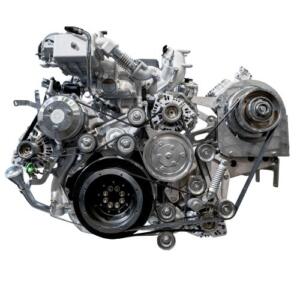
Mitsubishi L200 4D56U D-ID DOHC 16V 2.5 TURBO DIESEL Engine 2006-2014
-
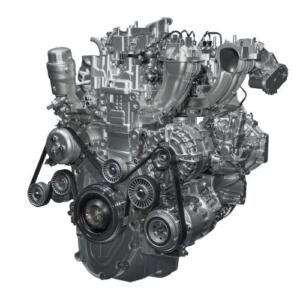
MITSUBISHI OUTLANDER 2.3 DIESEL ENGINE 4N14 2011 LOW MILEAGE STARTED AND TESTED
-
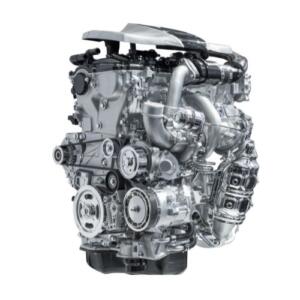
Complete Engine / 4B40/28.420 Km / Gasoline/939566 For MITSUBISHI Eclipse Cr
-
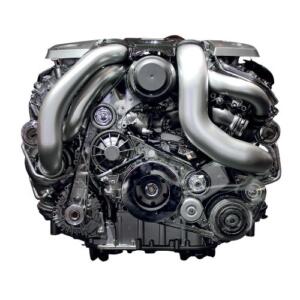
Mitsubishi L200 4D56U D-ID 2.5 Reconditioned Engine 2009-2014
-
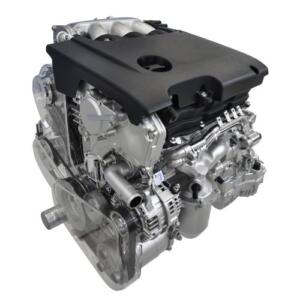
Complete Engine For MITSUBISHI Lancer Saloon/Ffamiliar CB0AW 1.6 16V Cat 4G92
-
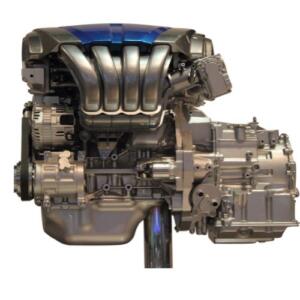
Complete Engine For MITSUBISHI Lancer Saloon/Ffamiliar CB0AW 1.6 16V Cat 4G92
-
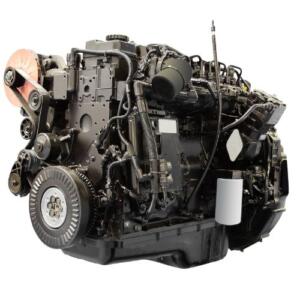
Mitsubishi Fuso Canter 4M50-2AT3 Diesel Engine Turbo Manual Transmission 4.9L
-
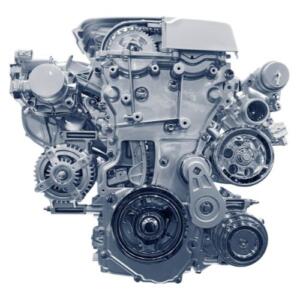
Complete Engine / 4M41/280.619 Km / Diesel/1055438 For MITSUBISHI Montero V
-

Full engine/4B12/5618600 For MITSUBISHI Outlander GF0
-

JDM Mitsubishi 4G63 Turbo Engine With 5 Speed Manual AWD 6 Bolt Crankshaft
-

Complete Engine For MITSUBISHI Lancer Saloon/Ffamiliar CB0AW 1.6 16V Cat 4G92
-

Full engine/3A92/6090736 For MITSUBISHI Space Star A00 Kaiteki
-

MITSUBISHI OUTLANDER 4B12 2360cc Petrol Hybrid 4 Cylinder COMPLETE ENGINE 2018
-

Mitsubishi L200 4D56U D-ID 16V 2.5 Reconditioned Engine 2006-2014
-

Jdm Mitsubishi Lancer Evo 4 2.0L Turbo Engine AWD MT Transmission 4G63T Evo 4
-

4g13 engine mitsubishi space star 2003 362086
-

Mitsubishi Motor 4B11 2016 55.962 Km
-

Full engine/3A92/6090736 For MITSUBISHI Space Star A00 Kaiteki
-

F9qld4192t4 engine mitsubishi space star 2002 369376
-

Full engine mitsubishi colt cz3 berl. 5 (z30a) 1.1 inform (d) 293390
-

Full engine/3A92/6090736 For MITSUBISHI Space Star A00 Kaiteki
-

MITSUBISHI L200 / Shogun Sport 2.5 Diesel 4D56T ENGINE Complete 2002-2006reg
-

Mitsubishi 4G61T 1.6 Turbo Engine Motor Mirage/Colt Manual 5 Speed Transmission
-

JDM Mitsubishi Lancer Evo 7/8 Engine 6 Speed Transmission JDM 4G63 Engine CT9A
-

JDM 1991-1992 Mitsubishi Galant VR4 4G63 2.0L DOHC Turbo 16V Engine 6 Bolt Motor
-

Complete Engine / 4M41U/146.408 Km / Diesel/1061289 For MITSUBISHI Montero
-

JDM 94-99 Mistubishi 3000GT VR4 6G72 3.0L DOHC Twin Turbo V6 Engine Getrag 6 Spd
-

Bsy engine mitsubishi grandis 2006 369225
-

2009 Mitsubishi Lancer Es Sport Mivec 2.0l Engine MT Transmission Gear Box 145K
-

88 92 MITSUBISHI MIRAGE DODGE COLT 1.6L DOHC TURBO ENGINE JDM 4G61
-

Engine mitsubishi space star mitsubishi space star 231167
-

4G63 MITSUBISHI NON TURBO ENGINE WITH AUTO TRANS HARNESS
-

Mitsubishi Lancer Evolution 8 VIII 2.0L Dohc Turbo 4G63 Engine 6Speed Gearbox
-

Full engine/4B12/5618600 For MITSUBISHI Outlander GF0
-

Full engine/4B12/5618600 For MITSUBISHI Outlander GF0
-

2008-2014 MITSUBISHI OUTLANDER 2.4L MIVEC 4B12 ENGINE JDM 4B12 ENGINE AWD AUTO
-

MITSUBISHI SHOGUN 3.2 ENGINE COMPLETE & FUEL PUMP 4M41 PAJERO DID 72K 99 – 2006
-

2004 Mitsubishi Endeavor engine 3.8L only 82k miles
-

JDM Mitsubishi Lancer Evo 5 6 Engine MT Transmission 4G63 Turbo Front clip CP9A
-

2011 Mitsubishi Lancer 2.0 DI-D Diesel 103kW (140HP) Bare Engine BWC BARE
-

Mitsubishi Shogun Pajero 91-99 engine block cylinder block + oil spray nozzles /
-

1990-1992 Mitsubishi 3000gt 6G72 Twin Turbo Engine Getrag Awd Transmission 6G72T
-

Full engine/3A92/6090736 For MITSUBISHI Space Star A00 Kaiteki
-

Motor Mitsubishi Outlander 2.4 16v Phev 4B12 – 135 HP 2019 Yr 18.342 Km
-

MITSUBISHI PAJERO MONTERO 4D56 2.5L TURBO DIESEL ENGINE 4X4 MANUAL TRANSMISSION
-

1994-1999 MITSUBISHI PAJERO 2.8L TURBO DIESEL ENGINE 4X4 TRANSMISSION JDM 4M40
-

Mitsubishi 4g63 Engine (Eclipse Evo Turbo Motor)
$2,500.00 -

JDM Mitsubishi Evolution 7 8 EVO 7 8 CT9A 4G63 2.0L Turbo Replacement Engine 55K
$2,290.00